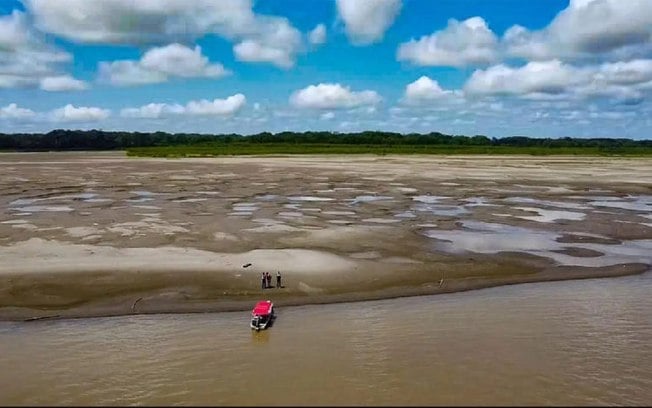The Brazilian hydroelectric sector is in a state of alert due to low levels in reservoirs; dry air, fires, smoke – this is the panorama of the worst period of drought faced by more than half of Brazil in the last four decades, according to a survey exclusive to the National Center for Monitoring Natural Disasters (Cemaden). The information was released by g1.
Of the 27 states, 16 and the Federal District are experiencing the worst drought recorded in the period from May to August since the 1980s. Among those affected are: Amazonas, Acre, Rondônia, Mato Grosso, Pará, Mato Grosso do Sul, Goiás, Minas Gerais, São Paulo, Paraná, Rio de Janeiro, Espírito Santo, Bahia, Piauí, Maranhão, Tocantins.
Cemaden, linked to the Ministry of Science and Technology (MCTI), is responsible for providing data to the federal government on this situation. Ana Paula Cunha, a specialist in drought monitoring at the agency, says that, in addition to the territorial coverage, it is the first time in years of monitoring that such a prolonged drought has been observed.
“We had never seen such a long drought in such an expanded way across the country, outside the semi-arid states. It is already 12 months long. This is a very worrying scenario.”
With 12 months under the effects of drought in most of the national territory, the Cemaden survey reveals that, in several areas, 16 states recorded the worst rates in 44 years. Although the drought extends to almost all federative units, the intensity is lower in Rio Grande do Sul.
Now, more than 3.8 thousand cities have some drought classification. The index is calculated based on precipitation levels, considering the proximity or distance of the historical average and the period.
To get a dimension of the severity, the number of municipalities in this condition increased by almost 60% between July and August. According to Cemaden, the August data are still preliminary, and the scenario may worsen by the end of the month.
In the Southeast, for example, of the 1,668 cities, 1,666 are in a drought situation. The scarcity of rainfall, added to the increase in temperatures, has impacted rivers throughout Brazil. Most of the hydrographic basins are under some classification of drought, according to Cemaden monitoring.
Adriana Cuertas, hydrologist and researcher at the agency, explains that the prolonged drought not only accelerates the disappearance of water, especially in the North region, but also hinders the recovery and survival of the rivers.
“These drought cycles are worrying for the basins. The river survives with water from the water table, which passes below it. If there is no rain, this sheet is not fed and with so much time without replacing water, this makes recovery difficult. We are already seeing smaller rivers, with headwaters, disappear over time in some places.”
The drop in river levels is already having an impact: in the North, dozens of cities are on alert, and authorities recommend stockpiling food. In some areas, navigation, the main mode of transport, is compromised.
This situation affects not only local communities, but also the national economy, harming, for example, the flow of products from the Manaus Free Trade Zone. In 2023, companies reported expenses of R$ 1.4 billion due to the lack of water, which raised the prices of products distributed across the country.
In addition, energy generation also suffers consequences. Last week, the National Electric System Operator (ONS) announced the need to reduce the use of hydroelectric plants in the North due to the low rivers. With the interconnected system, this region is vital for energy generation in Brazil, and the ONS informed that it will activate thermoelectric plants to reinforce the supply.
Energy experts point out that, although the government claims that there is enough energy to avoid blackouts, emergency measures could increase the cost of electricity throughout the country.
Want to stay on top of the main news of the day? Join our WhatsApp channel and our Facebook community.


